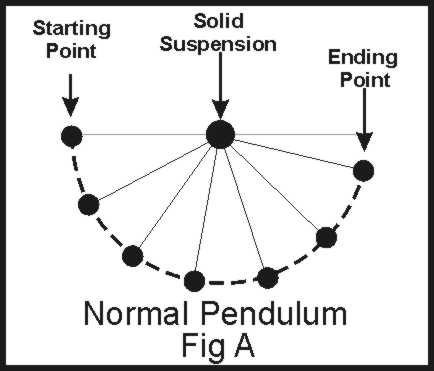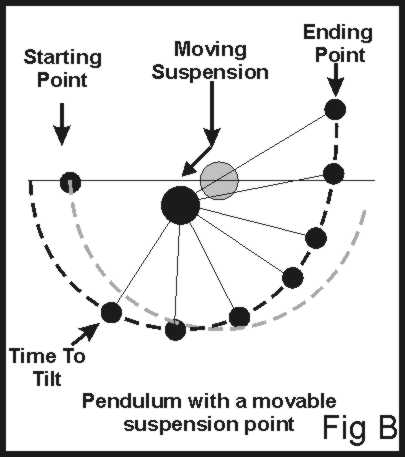|
How High Can A Free Swing Go? by Ron Clifton
My website www.bowl4fun.com now has a “Forum” where my readers can easily make comments on anything from the newest bowling balls to the articles I write. There is even one section called “The Coaching Corner” where you can choose to “Ask a Bowling Question” or “Request a Future Article” In the “Ask A Bowling Question” section, a bowler with the screen name “josephsw” asked a wonderful question that I may have not been asked before. The question was “How can gravity give that high of a backswing”? The questioner sited some basic physics about a “Bob” at the end of a pendulum can never swing higher than its starting point. So how can bowlers that claim to have a free armswing have a backswing higher than the ball’s original starting point in the pushaway? I will be the first to admit that bowlers with sky high backswings are definitely helping the ball get up there with their muscles. But you can generate a backswing that goes significantly higher than the original pushaway without using your muscles. Bowlers, who make an approach while swinging a ball, are not perfect pendulums, no matter how hard they try to be. But this is not all bad because I think that most bowlers should have a backswing that is higher than their pushaway. But how do we get the ball up there if we want to maintain a free armswing? It is simple really. All we have to do is tilt the spine a little (that means lean forward) after the ball drops into the swing. The key is to tilt at the right time. If you tilt too soon, you will actually kill your backswing instead of enhancing it. In Fig “A” you can see a normal pendulum with a fixed and solid suspension point. In the real world, the ending point will never be as high as the starting point because of friction.
In Fig “B” you will see a pendulum with a movable suspension point instead of a solid suspension point like the one in Fig “A”. The example in Fig “B” better represents what is actually happening with a bowler.
I like to see bowlers standing pretty much upright in their stance. That way, when the ball reaches the “Time to Tilt” position as shown in Fig “B”, you have somewhere to go. In Fig “B” the movable suspension point represents the bowler’s shoulder where the arm is attached. It is this movable suspension point that causes a “whipping” motion that generates a higher backswing without using any added muscle. You will also notice in Fig “B” that the suspension point only moved a little forward and downward to create this whipping motion. This movement does not have to be large but it must come at the right time. You can actually tie a weight to the end of a string and suspend the string from a stick to see for yourself. With a bowler, the “whipping” motion is created by the shoulder when the spine is tilted a little forward when the ball reaches that “time to tilt” position. If you bend a little too soon, it will actually kill the backswing and it will go lower instead of higher. So look at fig “B” to get an idea of where the tilt should take place. Most bowlers tend to tilt too much and/or too soon. This robs them of their chance to take advantage of this slick, little move and defy gravity.
Bowl great!
|

